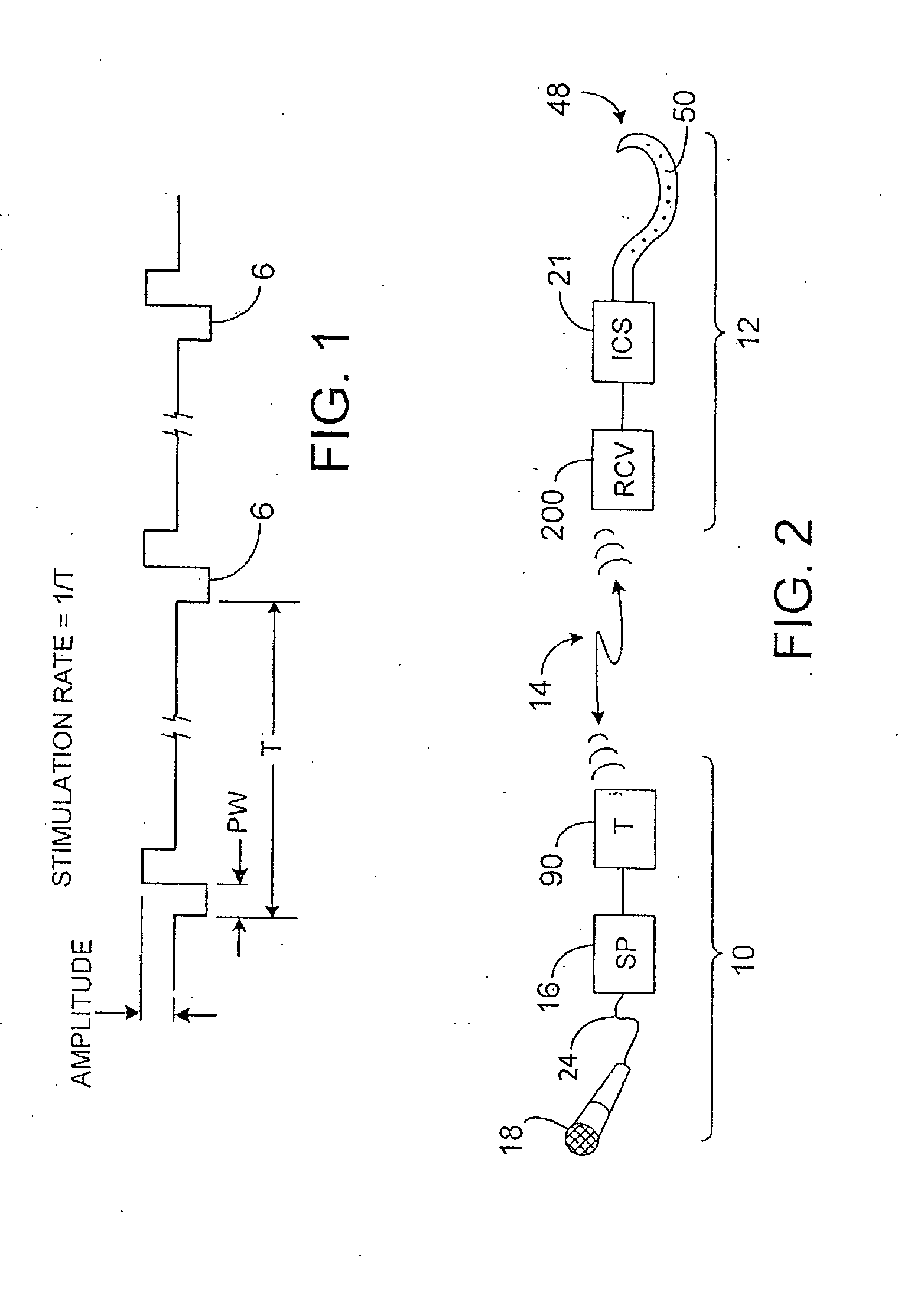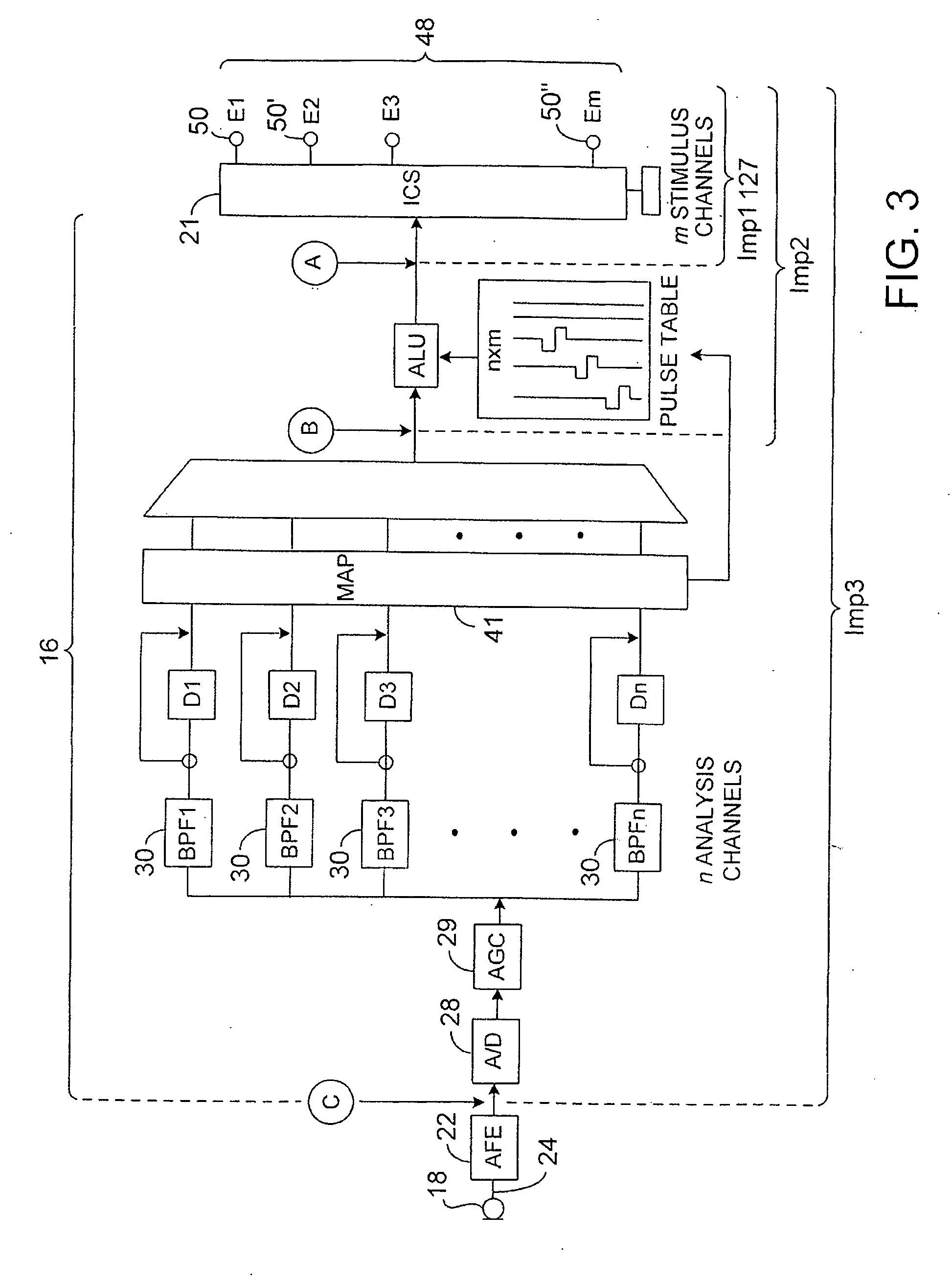FSK telemetry for cochlear implant
a cochlear implant and telemetry technology, applied in the field of cochlear implants, can solve the problems of loss of the ability to perceive frequencies, large amount of information in the sensory signal, and generally considered impractical to connect the signal processing system to the cochlear implant by wire, so as to reduce electromagnetic interference
- Summary
- Abstract
- Description
- Claims
- Application Information
AI Technical Summary
Benefits of technology
Problems solved by technology
Method used
Image
Examples
Embodiment Construction
FIG. 1 shows a biphasic pulse train having a stimulation rate (1 / T), pulse width and pulse amplitude as those terms are commonly used in connection with a neurostimulator device, such as a cochlear implant, a spinal cord stimulator, a deep brain stimulator, or other neural stimulator. All such systems commonly stimulate tissue with biphasic pulses 6 of the type shown in FIG. 1.
A “biphasic” pulse 6 consists of two pulses: a first pulse of one polarity having a specified magnitude, followed immediately, or shortly thereafter, by a second pulse of the opposite polarity, although possibly of different duration and amplitude. The amplitudes and durations are selected so that the total charge of the first pulse equals the total charge of the second pulse. Such charge-balancing is believed to reduce damage to stimulated tissue and to reduce electrode corrosion. For multi-channel cochlear stimulators, it is common to apply a high rate biphasic stimulation pulse train to each of the pairs of...
PUM
 Login to View More
Login to View More Abstract
Description
Claims
Application Information
 Login to View More
Login to View More - R&D
- Intellectual Property
- Life Sciences
- Materials
- Tech Scout
- Unparalleled Data Quality
- Higher Quality Content
- 60% Fewer Hallucinations
Browse by: Latest US Patents, China's latest patents, Technical Efficacy Thesaurus, Application Domain, Technology Topic, Popular Technical Reports.
© 2025 PatSnap. All rights reserved.Legal|Privacy policy|Modern Slavery Act Transparency Statement|Sitemap|About US| Contact US: help@patsnap.com



